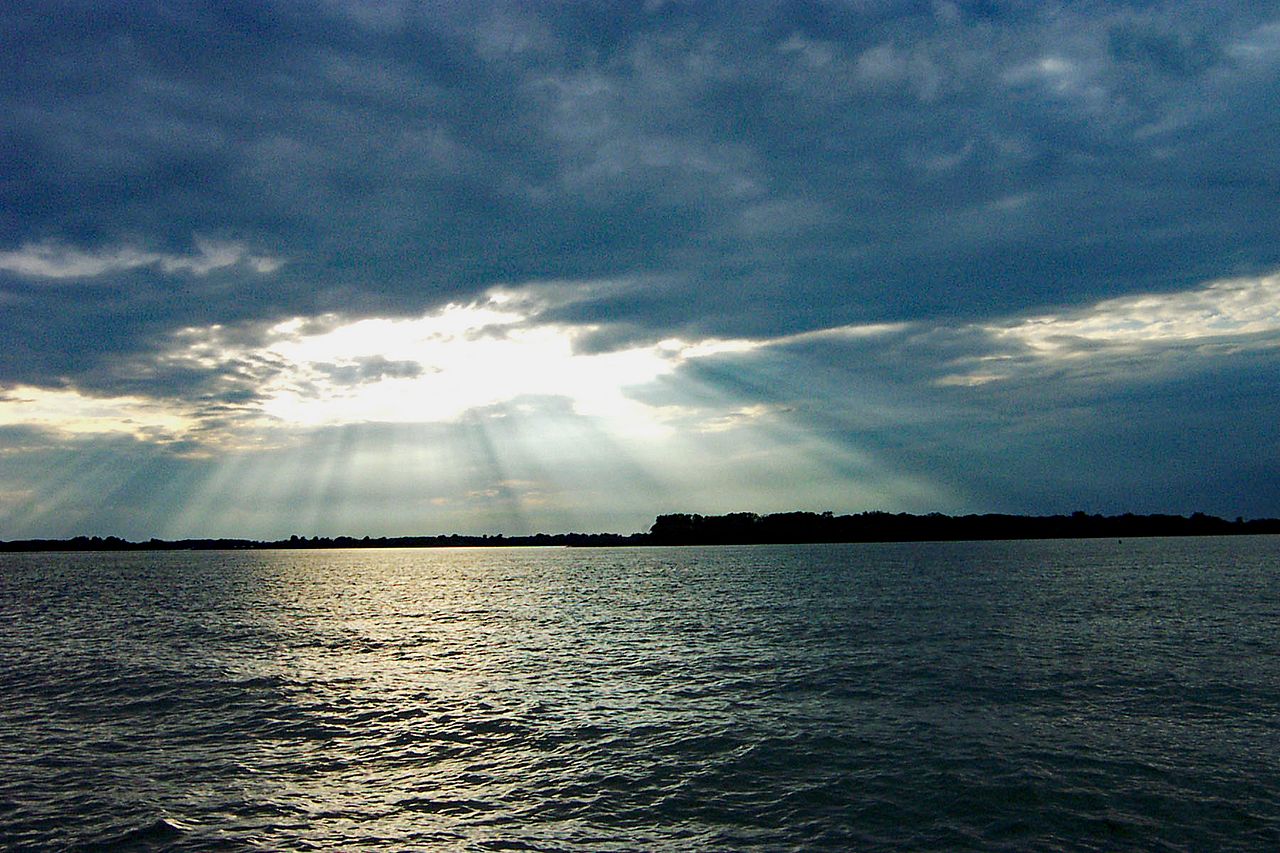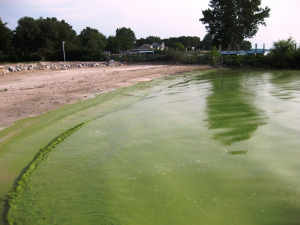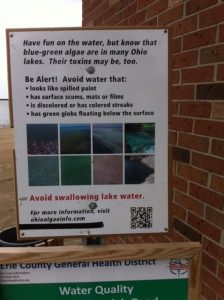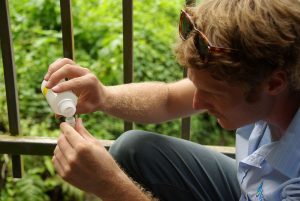
Advocates say “Foot dragging has to stop.”

Blue green algae bloom on the shore of Catawaba Island, Ohio in Lake Erie, courtesy of NOAA
A coalition of Lake Erie advocates has filed a lawsuit in federal court against the U.S. Environmental Protection Agency for failing to protect Lake Erie from harmful algae blooms.
The move comes near the three-year anniversary of the Toledo water crisis that left almost a half million residents without safe drinking water for more than three days.
Five environmental groups and a sport fishing business association are “asking a federal judge to order the agency to carry out its duty under the Clean Water Act,” coalition members said in a press release.
The legal paperwork was filed by the National Wildlife Federation, a member of the coalition.
Is Lake Erie Impaired?
The plaintiffs want the court to rule on whether Lake Erie is “impaired” which “means that the water quality does not meet legal standards for fishing, swimming, and drinking,” according to the coalition.

Lake Erie beach warning sign, courtesy of Gary Wilson
The designation would make it incumbent on federal and state agencies to put an action plan in place to restore Lake Erie’s health.
In addition to the National Wildlife Federation, the groups bringing the suit are the Alliance for the Great Lakes, Michigan United Conservation Clubs, Lake Erie Foundation, the Ohio Environmental Council and the Lake Erie Charter Boat Association.
Lake Erie has been plagued by toxic algae blooms primarily caused by nutrient runoff from agriculture. A toxic bloom caused Toledo to shut down its drinking water system in 2014 leaving 400,000 people to rely on bottled water for three days.“We hope the lawsuit is a catalyst for the EPA to fulfill its responsibility under the Clean Water Act so that state and federal public officials can start putting solutions in place to curb harmful algal blooms in Lake Erie that are harming our drinking water, jobs, and way of life,” said Mike Shriberg, director of the Great Lakes region for the National Wildlife Federation.
“Utter failure”
The nutrient runoff from farms which leads to toxic algae blooms, is nothing new.
Following a record algae bloom for Lake Erie in 2011, President Barack Obama’s EPA Administrator Lisa Jackson spoke to a gathering of the Great Lakes community in Detroit.
“With record-setting harmful algae levels occurring in parts of the Great Lakes, we are focusing resources on reducing phosphorus to the watersheds of Ohio’s Maumee River, Michigan’s Saginaw River, and Wisconsin’s Lower Fox River,” Jackson told activists.
What followed was an infusion of federal Great Lakes restoration funding to urge farmers to implement best practices to limit nutrient runoff. The program was managed by the Department of Agriculture’s Natural Resource Conservation Service.

Water quality testing, courtesy of DFAT
In March of 2016 the agency announced it would invest $41 million to “support the work of farmers … to improve water quality” in Lake Erie. The $41 million brought the three-year total to $77 million.
Announcing the new funding, then Secretary of Agriculture Tom Vilsack praised farmers for “the great strides” they’d already made to reduce nutrient pollution.
Kudos followed from an Ohio environmental group.
“We commend the agency for its plan to reduce the pollution flowing into Lake Erie,” said Adam Risen, the Ohio Environmental Council’s Director of Clean Water.
The council is one of the plaintiffs in the lawsuit brought against the EPA.
But participation by farmers in these federally-funded programs was voluntary, and a key Great Lakes executive had already said that voluntary measures by farmers weren’t working.

Lana Pollack U.S Section Chair of the International Joint Commission, courtesy of ijc.org
“Voluntary measures … are failing. I mean they are an utter failure,” Lana Pollack told Algae World News in February of 2015, a year before the $41 million announcement. Pollack said Lake Erie is “clearly impaired.”
Pollack is the U.S. Chair of the International Joint Commission, the U.S. and Canadian body that advises the two governments on trans-border water issues.
In January of 2016, Susan Hedman resigned her position as EPA administrator for the Great Lakes region. Her resignation was based on her role in the Flint water crisis.
When Hedman left the agency, Lake Erie activist Sandy Bihn recounted her conversations with Hedman on Lake Erie’s problems to WTOL 11 in Toledo.
Bihn told the station that she had “pointed” conversations with Hedman. She said Hedman failed to take action on Lake Erie’s toxic algae problem.
“Through the years she has failed to declare the basin impaired as should be done,” Bihn told WTOL.
Bihn’s Lake Erie Foundation is one of the plaintiffs in the suit against the EPA.
Lake Erie’s Health is now in the hands of EPA Administrator Scott Pruitt
In December of 2016, as the Obama administration – which had coordinated the federal program to protect Lake Erie – prepared to leave the White House, the coalition notified EPA administrator Gina McCarthy of its intent to sue the agency. Notification of intent to sue is a procedural requirement before a suit can be filed.

Mike Shriberg, Great Lakes regional executive director of the National Wildlife Federation, courtesy of nwf.org
“Foot-dragging by the U.S. EPA has to stop” the National Wildlife Federation’s Shriberg said in the press release in December.
Lake Erie’s health at the federal level is now the responsibility of Trump EPA administrator Scott Pruitt, who was named in the suit in his official capacity. As Oklahoma attorney general, Pruitt had a track record of suing the EPA.
The Trump administration has proposed a severe downsizing of the EPA and elimination of federal funding for the Great Lakes, which would include money for the voluntary pollution programs for Lake Erie.
A region-wide lobbying effort is underway, involving environmental groups, business interests, the Great Lakes Commission and members of the Great Lakes congressional delegation, to keep federal funding for the Great Lakes at the current $300 million level.
U.S. EPA’s office in Chicago , which is responsible for Lake Erie, did not respond to a Great Lakes Now request to comment on the law suit.




